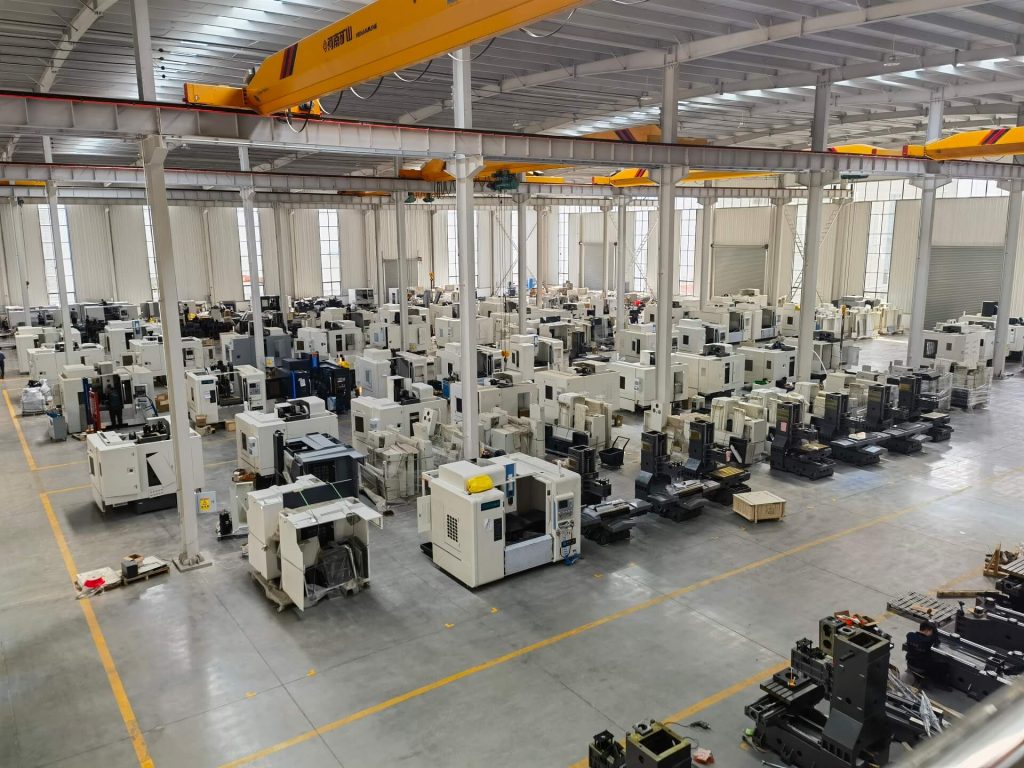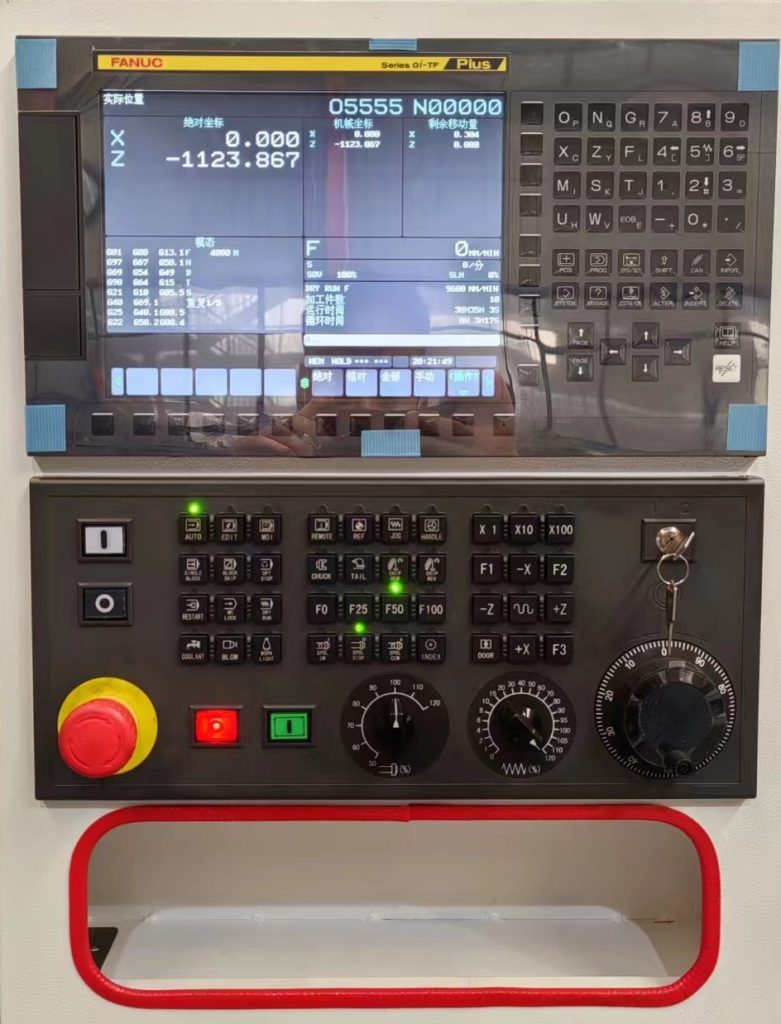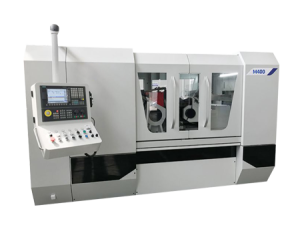Computerized Numerical Control (CNC) machines are widely used in the manufacturing industry. This article will introduce various types of CNC machine tools, along with their applications and advantages and disadvantages.
Why We Need CNC Machines?
CNC machines are machinery controlled by a digitalized system and equipped with programming languages.Compared to manual machines, CNC machines only require inputting parameters into the CNC system to achieve automatic processing, reducing labor while increasing production efficiency and machining accuracy.Today, CNC machines have gradually replaced manual machines, becoming an irreplaceable presence in the mechanical manufacturing industry.
Types of CNC Machines
There are many types of CNC machine tools, with the following three main classifications.
CNC machines classified according to the machining process
1. CNC Milling Machines
A CNC milling machine is a computer-controlled machine that uses rotating cutting tools to remove excess material from a workpiece. CNC milling machines are programmed through a CNC system and employ various cutting tools to produce a wide range of products with flat surfaces, curved surfaces, concave and convex shapes, and intricate curves. CNC machines are applicable in aerospace, automotive manufacturing, and mold processing sectors.
Advantages: High precision, high accuracy, wide processing range, suitable for mass production
Disadvantages: Demands highly skilled operators, long training time

2. CNC Lathe Machines
Unlike CNC milling machines, CNC lathes have a fixed cutting tool while the workpiece rotates. Due to the rotational processing method of the workpiece, CNC lathes are generally suitable for processing outer circles, inner circles, end faces, and tapered surfaces. Therefore, CNC lathes are widely used in the manufacturing sector for the machining of shaft-type components.
Advantages: High product accuracy, minimal material wastage.
Disadvantages: High maintenance costs, complex operation of the CNC system.
3. CNC Router Machines
CNC routers can cut various two-dimensional or three-dimensional shapes on relatively soft materials like wood and plastic. They are suitable for crafting woodwork, decorative items, and musical instruments.
Advantages: Diverse range of processing shapes.
Disadvantages: Limited cutting range, best suited for cutting softer materials.
4. CNC Drilling Machines
A CNC drilling machine precisely positions and drills holes on a workpiece using rotating drill heads, commonly for cylindrical shallow holes and small holes. CNC drilling machines are suitable for manufacturing precision parts, such as military equipment and circuit board production.
Advantages: Fast speed, high precision, suitable for mass production.
Disadvantages: Only applicable for drilling.
5. CNC Grinding Machines
A Grinding CNC machine uses an automatic grinding wheel to remove material from a workpiece, improving surface finish. It’s suitable for processing hard materials, such as hardened steel. The application of CNC grinding machines is extensive.They are used for grinding tools and machining metal surfaces.
Advantages: High precision, smooth surface finish.
Disadvantages: Generates more heat, slow speed.
6. CNC Plasma Cutting Machines
The CNC Plasma Cutting machine cuts conductive materials using a discharged electric arc. It’s known for its fast cutting speed and high precision, making it suitable for large-scale processing, particularly for stainless steel products and automotive parts.
Advantages: Fast cutting speed, capable of processing thick materials.
Disadvantages: Low precision, suitable only for metal materials.
7. Electrical Discharge Machines (EDM)
EDM uses electric sparks to transform particle thermal energy into metal thermal energy to remove materials. EDM can process materials with high hardness and good thermal conductivity, primarily used in the aerospace and medical equipment industries.
Advantages: Extremely high machining accuracy, suitable for processing intricate designs.
Disadvantages: Low machining efficiency, high cost.
8. CNC Laser Cutting Machines
The CNC laser cutting machine uses a concentrated laser beam to accurately cut workpieces and is widely used in the jewelry and engraving industries.
Advantages: Extremely high cutting precision, minimal maintenance.
Disadvantages: High cost, potential safety hazards.
9. CNC Waterjet Cutting Machines
The CNC waterjet cutting machine typically uses high-pressure water to cut materials. The process doesn’t generate heat, making it suitable for processing heat-sensitive materials and applicable in the design fields of glass or ceramics.
Advantages: Low material loss, suitable for any material.
Disadvantages: Slow processing speed, high noise.
10. CNC Punch Machines
A CNC punch machine uses punching tools and dies to process metal sheets. During the processing, the CNC system of the punch machine can accurately position and determine the depth to complete processes such as punching, perforating, and tapping. CNC punch presses are suitable for metal fabrication, especially in the manufacturing of electronic communication equipment.
Advantages: High precision, fast processing speed, great for mass production.
Disadvantages: Suitable only for metal materials.
11. 3D Printers
3D printing is a rapid prototyping process that takes a digital model created in CAD, converts it using CAM software, and eventually transforms it through an additive process. 3D printing is widely applied in the medical and fashion industries.
Advantages: Customizable products, time-saving.
Disadvantages: Limited build size, unsuitable for large-scale production, ideal for simple products.
CNC machines classified by the number of axes
1. Double-axis CNC machines
A two-axis CNC machine includes two independent motion axes, the X-axis and the Y-axis, allowing the tool to move back and forth and left to right. Typically, two-axis CNC machines are CNC lathes, which can be used for turning and drilling, suitable for some simple flat processing tasks. These machines are easy to operate and maintain, and they are cost-effective.
2. Three-axis CNC machines
Three-axis CNC machine tools typically consist of the X-axis, Y-axis, and Z-axis. Widely used in milling, drilling, turning, and other processes, three-axis CNC machine tools are suitable for many machining tasks. The Z-axis can move vertically, expanding the cutting range and improving machining precision.
3. Four-axis CNC machines
The four-axis CNC machine includes the X-axis, Y-axis, Z-axis, and an additional rotational axis, the C-axis. With the extra rotational axis, CNC machines can perform more intricate machining operations, such as processing curved and broad surfaces.
4. Five-axis CNC machines
A five-axis CNC machine includes the X, Y, and Z axes along with two rotary axes. This widens the machining range and increases the complexity of parts that can be machined. They are widely used in the aerospace industry and for machining complex curved parts.
5. Six-axis CNC machines
A six-axis CNC machine features three additional rotary axes, enabling it to be used for intricate cutting and design tasks. Primarily utilized in automotive mold manufacturing, aerospace component production, and the fabrication of precision medical equipment.
6. Seven-axis CNC machines
Building upon the foundation of the six-axis CNC machine, the seven-axis CNC machine includes an additional movable axis. This is commonly applied in the manufacturing of precision components for the aerospace industry.
CNC machines classified based on the control systems
1. Point Control
Point-to-point positioning control is a straightforward CNC machining method where the CNC machine only needs to move directly from one specified point to the next without considering the specific path or travel of the tool. This method offers high machining accuracy, a simple process, and is suitable for tasks that do not require continuous tracking.
2. Linear Control
The straight cutting positioning control system is ideal for precision linear cutting, ensuring that the machine moves along a straight line without any deviation. It is suitable for use with CNC plasma cutting machines and CNC laser cutting machines.
3. Contouring Control
The contour processing path CNC system is quite complex, allowing for simultaneous management of speed and position, making it suitable for manufacturing products that require high precision detailing and have complex shapes. This type of control system can be applied to many types of CNC machines, including CNC lathes and CNC grinding machines.

How to Choose CNC Machines
When choosing a CNC milling machine, there are numerous factors to consider.
Step 1: Identify Your Needs
Firstly, you need to identify your machining requirements, including workpiece material, dimensions, machining process, product accuracy, and output.
Step 2: Choose the Type of Equipment
Based on your machining requirements, select the type of equipment. If your product requires milling or similar processes, you can opt for a milling machine. If the product’s design is complex and the machining difficulty is high, you can choose a four-axis or five-axis CNC milling machine. Consider the machining tools and whether advanced accessories are available.
Step 3: Choose Machining Tools
You need to determine the cutting tools and whether the equipment is equipped with other functions. Based on the workpiece material, machining precision, and machining process, you need to determine the type and material of the cutting tools. It’s also important to consider if the machine is equipped with automatic chip removal and other functionalities. The performance of tools and equipment varies among different brands.
Step 4: Consider Costs
You need to consider equipment costs, tool costs, training costs, and maintenance costs.
Step 5: Select Services
You need to select high-quality suppliers who offer quality assurance, software updates, equipment maintenance, and other post-sales services.
Conclusion
By reading the above content, I believe you have gained a general understanding of the types and pros and cons of CNC machines. If you would like to learn more about CNC machines, please contact us. We look forward to communicating and collaborating with you. Thank you for reading!










